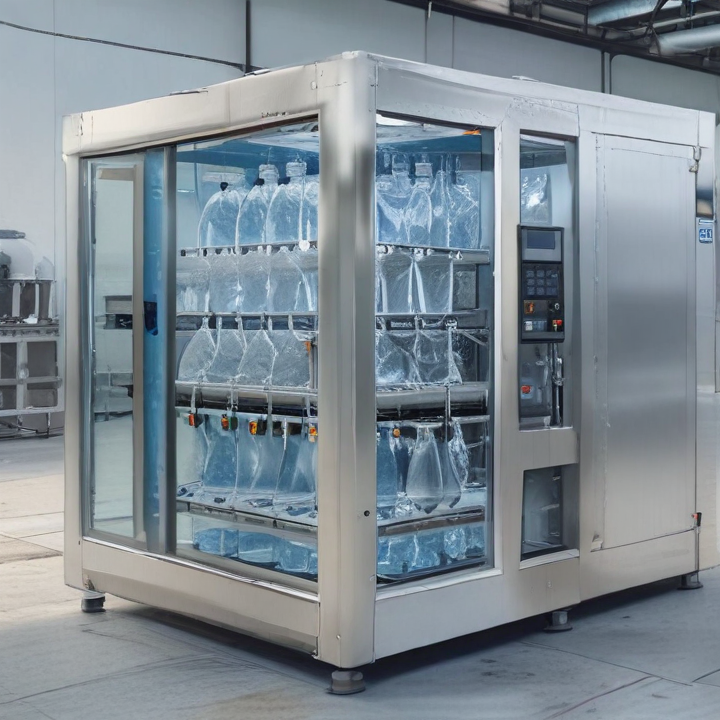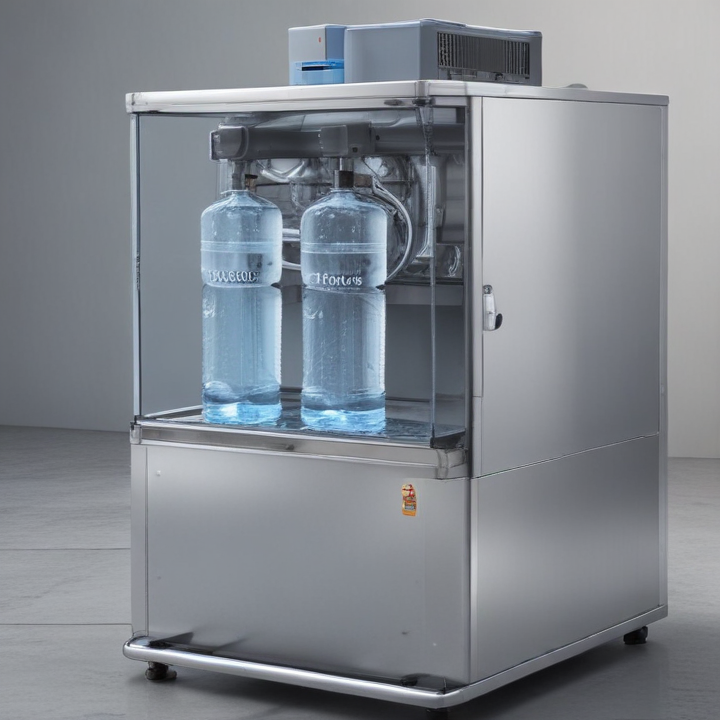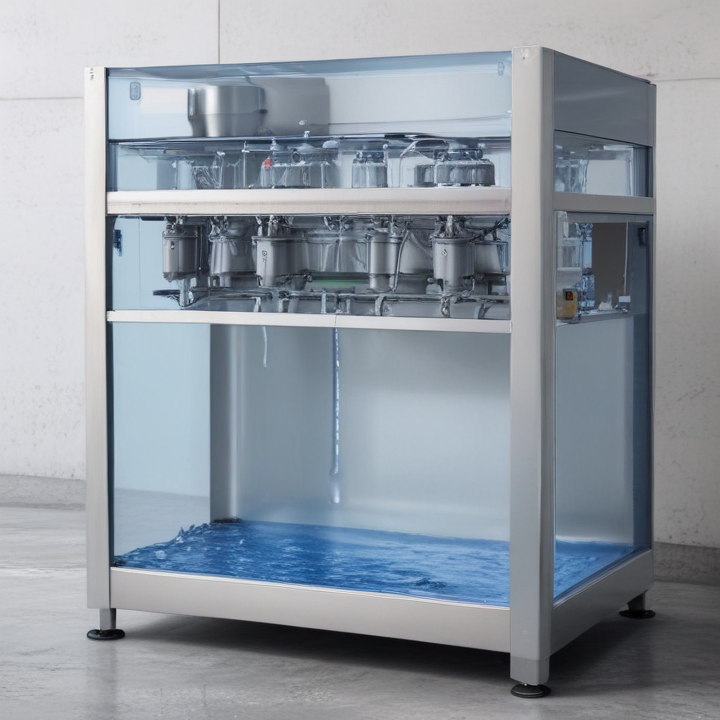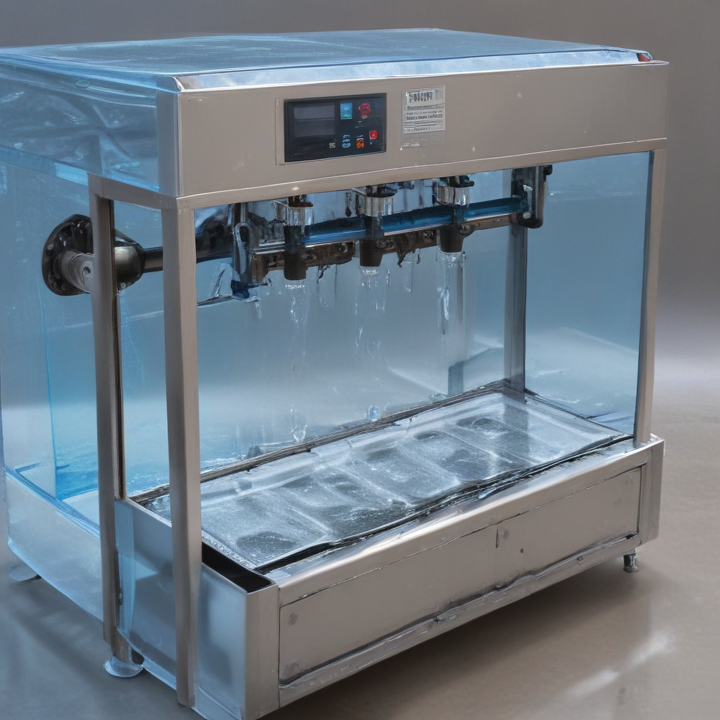List Technical Parameters of “water packing machine”
A water packing machine is employed for filling and sealing water into various containers like bottles, pouches, or cups. Below are the essential technical parameters:
1. Filling Capacity: Range of volume that can be filled per container, usually measured in milliliters (ml) or liters (L).
2. Filling Speed: The number of containers filled per minute; typically expressed in containers per hour (cph).
3. Accuracy: Precision of the filling mechanism, often indicated as a percentage deviation from the intended volume.
4. Power Consumption: Electrical power required, usually measured in kilowatts (kW).
5. Dimensions: Physical size of the machine, including height, width, and depth, measured in millimeters (mm) or meters (m).
6. Weight: Total weight of the machine, generally measured in kilograms (kg).
7. Material: Construction materials, commonly stainless steel for parts in contact with water to ensure hygiene and durability.
8. Sealing Mechanism: Type of sealing utilized, such as heat sealing or ultrasonic sealing.
9. Control System: Type of control system, which can range from manual to fully automated PLC (Programmable Logic Controller).
10. Operating Temperature: The range of temperatures within which the machine can operate effectively.
11. Water Source Compatibility: Types of water sources the machine can handle, like RO (Reverse Osmosis) water, mineral water, etc.
12. Container Types: Different shapes and materials of containers the machine can handle, such as PET bottles, glass bottles, or plastic pouches.
13. Sanitation Features: Include cleaning mechanisms like CIP (Clean-In-Place) systems to maintain hygiene.
14. Maintenance Requirements: Regular maintenance intervals and ease of access to parts for servicing.
15. Output Pressure: The pressure required by the filling system, crucial for high-speed operations.
16. Noise Level: Operating noise, typically measured in decibels (dB).
By understanding these technical parameters, operators can select the appropriate water packing machine to meet production needs and ensure efficient and sanitary water packing.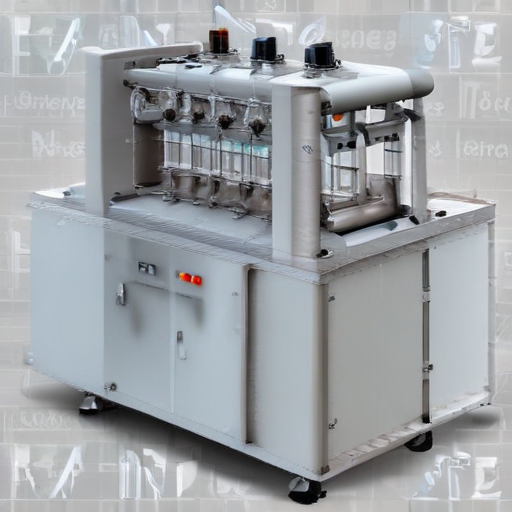
List Product features of “water packing machine”
A water packing machine, also known as a water pouch filling machine or water sachet packing machine, is designed to automate the process of filling and sealing water in pouches or sachets. Here are its key product features:
1. High Efficiency: Capable of filling and sealing numerous pouches per minute, significantly reducing labor costs and time.
2. Accuracy: Advanced volumetric filling systems ensure precise volume measurement, minimizing wastage and maintaining product consistency.
3. Hygienic Design: Constructed with food-grade stainless steel, ensuring compliance with international hygiene standards and easy cleaning.
4. Fully Automated Operation: Features automatic pouch forming, filling, sealing, cutting, and counting, reducing human intervention and error.
5. Versatile Filling Options: Can handle various pouch sizes and configurations, offering flexibility for different packaging needs.
6. User-Friendly Interface: Equipped with a touch-screen control panel for easy operation, monitoring, and troubleshooting.
7. Durability: Engineered for long-term use with robust materials and components, reducing downtime and maintenance costs.
8. Compact Footprint: Designed to occupy minimal space, making it suitable for facilities with limited floor area.
9. Adjustable Parameters: Allows customization of fill volume, pouch length, and sealing temperature for different packaging requirements.
10. High Sealing Integrity: Utilizes advanced heat-sealing technology to ensure strong, leak-proof seals.
11. Energy Efficient: Optimized power usage to reduce environmental impact and operating costs.
12. Safety Features: Includes emergency stop buttons, safety guards, and alarms to protect operators and equipment.
13. Compatibility: Can work with various types of films such as polyethylene and laminated films, ensuring adaptability to different packaging materials.
These features make the water packing machine a vital tool for industries ranging from small-scale bottled water production to large-scale beverage manufacturers.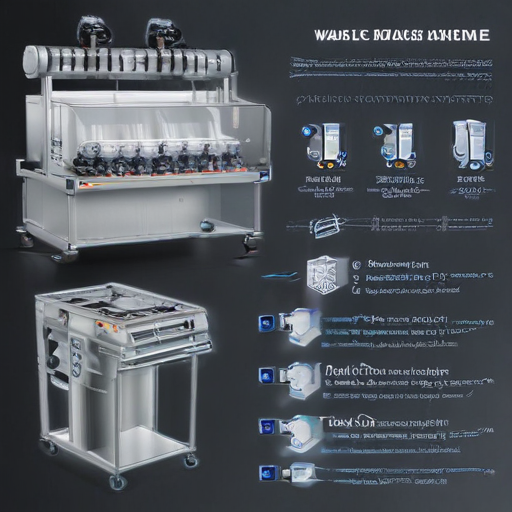
List Application of “water packing machine”
A water packing machine is a specialized device used for the automated packaging of water into various types of containers. Its applications span a broad range of industries and purposes, including:
1. Bottled Water Industry: Essential for large-scale operations, these machines ensure rapid and hygienic filling of water bottles ranging from small half-liter to larger 5-gallon bottles. They are widely used by companies producing bottled drinking water.
2. Pharmaceutical & Healthcare: Facilities use water packing machines to package sterilized water for injections, medical solutions, and laboratory use, guaranteeing contamination-free packaging.
3. Food & Beverage Industry: Besides drinking water, these machines package flavored water, sodas, and other beverages. Their precise filling mechanisms are crucial for maintaining product consistency and quality.
4. Emergency & Disaster Relief: Portable water packing machines are deployed to package safe drinking water quickly in disaster-hit areas where the water supply is compromised.
5. Hospitality & Retail: Hotels, restaurants, and retail outlets use smaller-scale machines for in-house water packaging, offering branded bottled water to their customers.
6. Agriculture: These machines package larger quantities of water to ensure an efficient supply for irrigation, livestock, and other agricultural needs.
7. Sports & Events: Organizers use them to package water for mass distribution at major sporting events, marathons, festivals, and other large gatherings, ensuring participants have access to clean drinking water.
8. Cosmetics & Skincare: Used for packaging distilled or mineral water employed in beauty products like facial sprays, lotions, and toners, maintaining high hygiene standards.
9. Household Goods: Some companies use water packing machines to package water for use in ironing, cleaning, or as a part of home water delivery services.
10. Research & Development: Laboratories and R&D facilities utilize these machines for packaging controlled quantities of water for various experiments and testing purposes.
Overall, water packing machines play an indispensable role in ensuring efficient, hygienic, and precise water packaging across multiple sectors.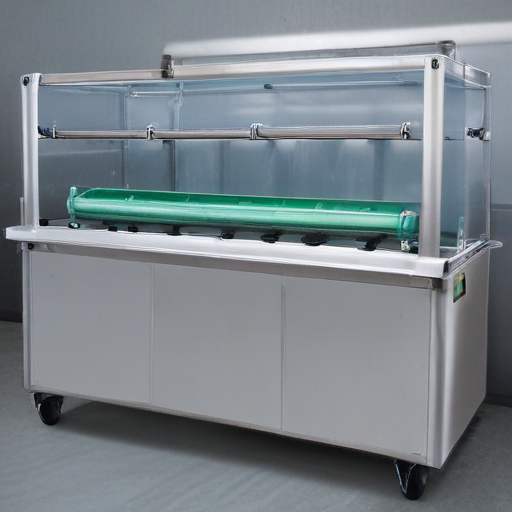
List Various Types of “water packing machine”
Certainly! Water packing machines come in various types, each designed to fulfill different packaging requirements based on volume, speed, and packaging style. Here are some common types:
1. Bottled Water Filling Machines:
– Automatic Bottling Lines: Fully automated systems that handle bottle rinsing, filling, capping, and labeling.
– Semi-Automatic Bottlers: Require some manual intervention but are less costly than fully automatic lines.
2. Pouch Water Packing Machines:
– Vertical Form-Fill-Seal (VFFS) Machines: These create pouches from a continuous roll of film, fill them with water, and seal them.
– Horizontal Form-Fill-Seal (HFFS) Machines: Create pouches from pre-formed films and are efficient for high-speed production.
3. Cup Water Filling Machines:
– Cup Sealing Machines: These are designed for filling water into pre-formed plastic or paper cups and then sealing them with foil or film lids.
4. Bag-In-Box (BIB) Fillers:
– Manual BIB Fillers: Require manual intervention for filling water into bags placed inside boxes.
– Automatic BIB Fillers: Automate the bag filling and boxing process, suitable for larger production scales.
5. Sachet Water Packing Machines:
– Automatic Sachet Machines: Package water into small, single-use sachets, ideal for markets where single-serving sizes are in demand.
6. Jar/Bottle Washing Machines:
– Specialized machines designed to clean and sterilize jars or bottles before they are filled with water.
7. Blow Moulding Machines:
– These machines are used to produce the plastic bottles or jars that will later be filled with water.
Each type of machine has unique features suitable for different scales and types of water packaging operations. Automated systems generally offer higher efficiency and consistency, while semi-automatic and manual systems can be more cost-effective for smaller operations.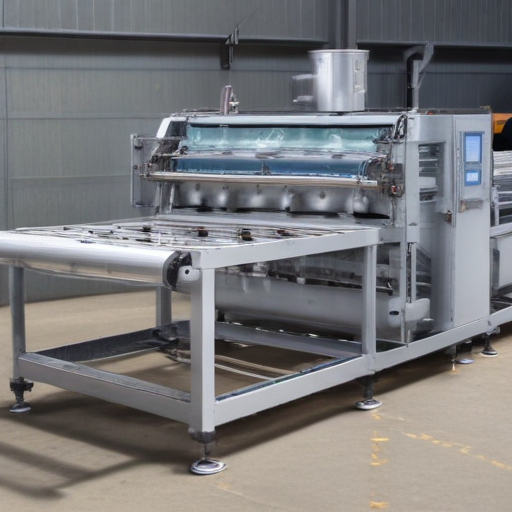
Custom Manufacturing Options for water packing machine
Custom manufacturing options for a water packing machine can significantly enhance efficiency, flexibility, and product quality. Here are some key customization features:
1. Filling Mechanism:
– Volumetric or Gravimetric Filling: Choose based on the required precision. Gravimetric filling offers higher accuracy for premium products.
– Servo-Controlled Fillers: Ensure consistent filling speeds and volumes.
2. Packing Types:
– Flexible Packaging: Pouches, sachets, and bags of various sizes and materials.
– Rigid Packaging: Bottles, jugs, and cartons for different capacities.
3. Material Compatibility:
– Compatibility with Different Packaging Materials: PET, HDPE, glass, laminate films, etc.
– Environmental Considerations: Options for biodegradable and recyclable materials.
4. Automation and Control Systems:
– PLC Integration: Allows for precise control and monitoring.
– HMI (Human Machine Interface): Simplifies machine operation and adjustments.
– Sensors and Feedback Mechanisms: Real-time monitoring for optimal performance.
5. Speed and Capacity:
– Variable Speed Control: Adjust production rate to meet demand.
– Multiple Filling Heads: Increase capacity for high-volume operation.
6. Sanitation and Compliance:
– CIP (Clean-In-Place) Systems: Ensure hygiene without disassembly.
– Regulatory Compliance: Meet industry standards (FDA, CE, etc.).
7. Customization for Unique Needs:
– Product Variability: Accommodates different viscosities and compositions.
– Labeling and Branding: Integrated printing and labeling systems for brand customization.
8. Space and Footprint:
– Compact Designs: Tailored to fit existing production spaces.
– Modular Units: Allow future expansion.
9. Data Integration:
– IoT and Smart Features: For enhanced monitoring and predictive maintenance.
– Integration with ERP Systems: Streamlined production management.
These customization options enable manufacturers to produce water packing machines tailored to specific operational, regulatory, and market requirements.
List Quality Control and The Manufacturing Process of “water packing machine”
Quality Control of Water Packing Machine
1. Material Inspection: Ensure raw materials and components meet specified standards.
2. Component Testing: Check critical parts like pumps, nozzles, and seals for performance and durability.
3. Assembly Verification: Regularly inspect assembly processes to ensure proper alignment and fitting of parts.
4. Leak Detection: Test the machine for leaks under various pressures.
5. Electrical Safety: Verify wiring and electronic components adhere to safety standards.
6. Functional Testing: Run the machine to ensure all functions (filling, sealing, cutting) operate correctly.
7. Output Consistency: Check the packaging for uniformity and proper sealing.
8. Endurance Testing: Run the machine for extended periods to ensure it can handle long-term use without failure.
9. Final Inspection: Comprehensive check before delivery, including all previous points plus aesthetic inspection.
Manufacturing Process of Water Packing Machine
1. Design & Engineering: Develop detailed designs and specifications using CAD software.
2. Component Sourcing: Procure high-quality materials and components.
3. Machining & Fabrication:
– Cutting: Precisely cut metals and plastics for frame and core components.
– Machining: Use CNC machines to shape and drill components.
– Welding & Assembly: Weld and assemble the frame and primary structure.
4. Sub-Assemblies Production:
– Pumps & Valves: Assemble and test for proper fluid control.
– Electronics & Wiring: Prepare circuit boards and wiring harnesses.
5. Main Assembly: Integrate all sub-assemblies into the main machine frame.
6. Calibration & Testing:
– Initial Calibration: Set up and fine-tune mechanical and electronic systems.
– Trial Runs: Test the machine with water and actual packaging materials.
7. Quality Control: Conduct thorough QA tests as described above.
8. Adjustment & Optimization: Make necessary adjustments based on QA feedback.
9. Packaging & Shipping: Carefully pack and ship the machine to the customer.
Adhering to stringent quality control measures throughout the manufacturing process ensures the reliability and efficiency of water packing machines.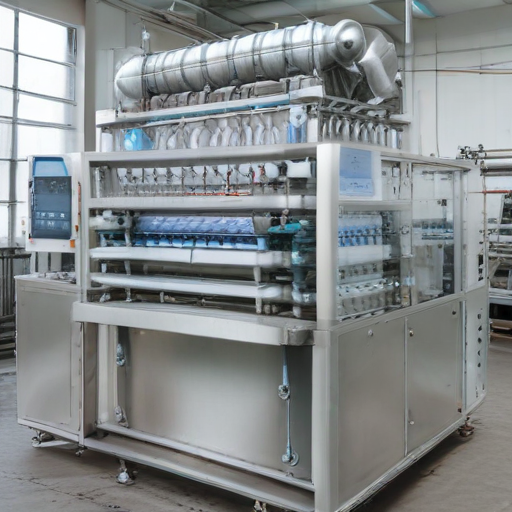
How to use “water packing machine”
Using a water packing machine efficiently involves several steps, typically including setup, operation, and maintenance:
Setup:
1. Installation:
– Place the machine on a stable, clean surface.
– Ensure it is near a water source and drainage facility.
– Connect the machine to a proper power supply as specified in the manual.
2. Water Source Connection:
– Connect the inlet hose to the water source.
– Ensure the hose is secure and free of leaks.
3. Material Loading:
– Load the machine with appropriate packing material (usually plastic films or pouches).
Operation:
1. Power On:
– Switch on the machine using the main power button.
2. Settings Configuration:
– Adjust settings for water temperature, volume, and packaging size based on your requirements.
– Input other necessary parameters like seal strength and packaging speed.
3. Filling and Sealing:
– Start the machine and it will begin the filling process.
– Monitor to ensure it fills pouches accurately and seals them properly.
4. Quality Check:
– Conduct an initial quality check on the sealed pouches.
– Check for leaks or improper seals.
5. Adjustment:
– Make any necessary adjustments in settings to improve packing quality.
Maintenance:
1. Regular Cleaning:
– Clean the machine after use to prevent contamination.
– Use recommended cleaning agents and follow the manufacturer’s cleaning procedures.
2. Inspection:
– Regularly inspect for wear and tear on seals, hoses, and other components.
– Replace worn parts as needed to maintain efficiency.
3. Lubrication:
– Lubricate moving parts as recommended in the user manual to ensure smooth operation.
Safety:
– Always follow safety protocols.
– Wear appropriate personal protective equipment (PPE).
– Keep hands and loose clothing away from moving parts.
By adhering to these guidelines, you can use the water packing machine efficiently, ensuring consistent and high-quality packaging.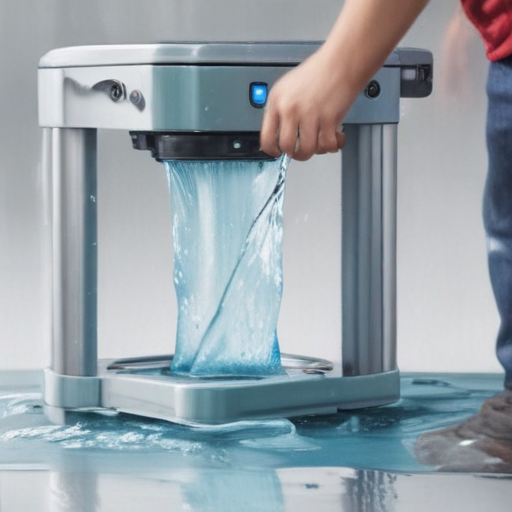
List Properties and Terms of “water packing machine”
A water packing machine, often utilized in the bottling and beverage industry, efficiently packages water into containers such as bottles, pouches, or sachets. Below are the essential properties and key terms related to water packing machines:
#### Properties:
1. Capacity: Indicates the machine’s ability to process a certain number of units per hour.
2. Automation Level: Varies from semi-automatic to fully automatic systems.
3. Material Compatibility: Typically handles PET, glass, or plastic materials.
4. Filling Precision: Ensures accurate volume in each container.
5. Speed: Refers to how fast the machine can fill and seal containers.
6. Durability: Often made from stainless steel to resist corrosion and ensure longevity.
7. Sanitation Features: Includes CIP (Clean-In-Place) systems for maintaining hygiene.
8. Size and Footprint: Physical dimensions of the machine to consider for space allocation.
9. Energy Consumption: Indicates how much power is required for operation.
10. Control System: Involves PLC (Programmable Logic Controller) for automated management.
#### Terms:
1. Filling Nozzle: The part of the machine that directs water into the container.
2. Conveyor System: Transports containers through different stages of the packing process.
3. Bottle Rinser: Cleans bottles before filling to ensure hygiene.
4. Capper: Secures caps onto filled bottles.
5. Labeller: Attaches brand labels to the containers.
6. Shrink Wrapping: Applies a plastic wrap around bottles for packaging.
7. Sterilization: Techniques used to eliminate microbial contamination.
8. Valve Control: Regulates flow and pressure during filling.
9. Flow Meter: Measures the volume of water being dispensed.
10. Safety Features: Includes emergency stop buttons and protective guards.
These properties and terms provide a comprehensive understanding of a water packing machine’s functionality and operational requirements. Choosing the appropriate machine requires considering these factors to meet production needs and ensure efficiency and quality.
List The Evolution history of “water packing machine”
The evolution of water packing machines can be traced through various technological advancements and industrial needs.
1. Early Manual Methods: In the early 20th century, water was manually filled into bottles and sealed using rudimentary methods. Labor-intensive, these methods were prone to contamination and inefficiency.
2. Introduction of Basic Machines (1950s-1960s): The first automated water packing machines emerged, simplifying bottling processes. These early machines could fill and cap bottles but lacked sophistication in reducing contamination.
3. Semi-Automation (1970s): Improvements in technology led to semi-automatic machines capable of higher output. Integration of conveyor belts and basic pneumatic systems improved efficiency and consistency.
4. Fully Automated Systems (1980s): Automation advanced significantly, incorporating electronic controls, sensors, and improved material handling. Machines became capable of rinsing, filling, and capping water bottles in a continuous process, increasing production rates.
5. Microprocessor Control (1990s): The integration of microprocessors allowed for precise control and monitoring, improving reliability and performance. Innovations included better sealing techniques and more efficient energy usage.
6. Advanced Robotics and AI (2000s): Robotics began playing a significant role, enabling high-speed operations and reducing human error. AI algorithms optimized packing processes and predictive maintenance.
7. Sustainability and Smart Technologies (2010s-Present): Recent developments focus on sustainability, using biodegradable materials and reducing plastic waste. Smart technologies, including IoT and advanced sensors, now enable real-time monitoring and data analytics for further efficiency and quality control.
In summary, water packing machines have evolved from manual methods to sophisticated, highly automated systems incorporating advanced robotics, AI, and sustainable practices. This evolution has significantly enhanced efficiency, precision, and environmental responsibility in water packaging.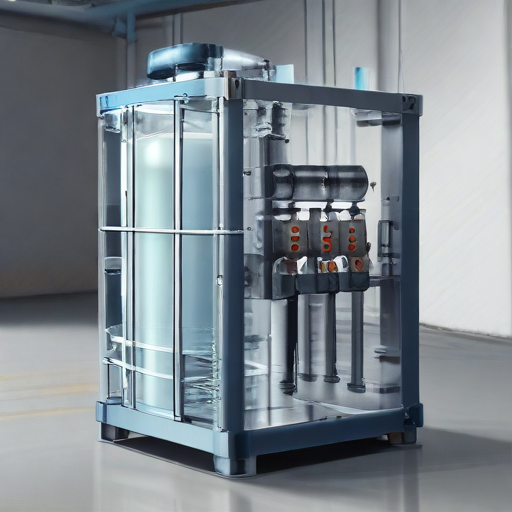
How to Select a Reliable water packing machine
Selecting a reliable water packing machine involves several important considerations to ensure quality, efficiency, and functionality. Here’s a concise guide to help you make an informed decision:
1. Determine Your Needs: Assess your production requirements, such as the capacity (bottles per hour), type and size of packaging, and specific processes (e.g., filling, capping, labeling).
2. Quality and Materials: Choose machines made from high-grade stainless steel to avoid corrosion and ensure longevity. Look for compliance with food safety standards like FDA or ISO.
3. Technology and Features: Opt for modern machines with automation features for higher efficiency and accuracy. Check for digital controls, touchscreen interfaces, and fail-safes.
4. Flexibility: Ensure the machine can handle different types and sizes of containers if you plan on varying your product line.
5. Supplier Reputation: Research manufacturers and suppliers. Read reviews, check references, and evaluate their market reputation. Reliable suppliers often provide better after-sales service and support.
6. Maintenance and Support: Consider the availability of spare parts and ease of maintenance. Good suppliers offer robust customer service and technical support.
7. Cost: Compare prices but don’t compromise on quality. Factor in total ownership cost, including maintenance and operational efficiency.
8. Compliance and Certifications: Verify that the machine meets industry standards and certifications. This ensures the machine is safe, reliable, and legally compliant.
9. Trial and Testing: If possible, arrange for a demonstration or trial run to evaluate the machine’s performance in real-time.
By focusing on these key areas, you can select a water packing machine that suits your operational needs, offers durability, and delivers reliable performance.
List “water packing machine” FAQ
Water Packing Machine FAQ
1. What is a water packing machine?
A water packing machine is a device used for packaging water into bottles, pouches, or other containers. These machines automate the process of filling, sealing, and labeling containers with water.
2. What types of water packing machines are available?
There are various types, including:
– Automatic Bottling Machines: For filling and sealing water bottles.
– Pouch Packing Machines: For packaging water in pouches.
– Filling and Sealing Machines: For versatility in container types.
3. What capacity options do these machines come in?
Machines range from small-scale units for a few hundred bottles per hour to large-scale units capable of handling thousands per hour.
4. What materials can these machines handle?
They typically handle PET, glass, and HDPE bottles, as well as laminated and non-laminated pouches.
5. How do I maintain the machine?
Regular cleaning, timely replacement of worn-out parts, and following the manufacturer’s maintenance schedule are essential for optimal performance. Always use recommended lubricants and cleaners.
6. Are these machines energy-efficient?
Many modern machines are designed to be energy-efficient and environmentally friendly, featuring lower power consumption and reduced wastage.
7. What are the primary components of the machine?
Key components include water filtration system, filling heads, conveyor belts, sealing units, and control panels.
8. How much space is required for installation?
Space requirements vary based on the machine size and type. Consult the manufacturer’s specifications for detailed dimensions.
9. How do I troubleshoot common issues?
Refer to the user manual for common troubleshooting steps, such as checking power supply, ensuring proper alignment of components, and clearing any blockages.
10. What is the average cost of a water packing machine?
Costs can range from a few thousand to several hundred thousand dollars, depending on capacity, features, and automation levels.
11. Is training provided for machine operation?
Most suppliers offer initial training and installation support to ensure proper machine operation.
12. Can the machine handle different bottle sizes?
Many machines have adjustable settings to accommodate various bottle sizes and shapes.
For further information, consult with machine manufacturers or suppliers to find a model that suits your specific needs.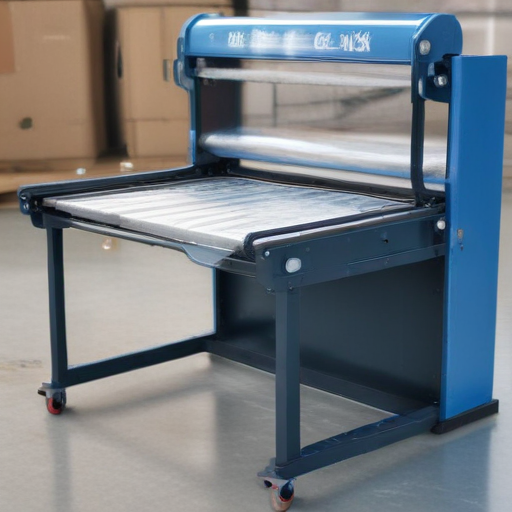
Top 10 FAQ with answer about water packing machine for Buyer Sourcing from China
Sure, here are ten frequently asked questions (FAQs) with concise answers about water packing machines for buyers sourcing from China:
1. What types of water packing machines are available?
– There are various types, including sachet filling machines, bottled water filling machines, and pouch packing machines. Each serves different packing needs based on volume and packaging material.
2. What is the production capacity of the machines?
– Capacities can range from 500 to 20,000 bottles or pouches per hour, depending on the specific machine model and brand. It’s crucial to match the machine’s output with your production requirements.
3. What is the standard voltage and power requirement?
– Most machines operate on 220V or 380V with a power requirement ranging from 1 kW to 10 kW. Ensure compatibility with your local electrical standards.
4. Can the machines handle different bottle sizes or pouch volumes?
– Yes, many machines are adjustable and can handle various sizes by changing parameters or using specific molds/formats. Confirm the range with the supplier.
5. What is the average lead time for delivery?
– Standard lead times range from 30 to 60 days, depending on the complexity of customization and the supplier’s production schedule.
6. Are machines CE or ISO certified?
– Yes, reputable manufacturers usually provide CE (Conformité Européenne) or ISO (International Organization for Standardization) certifications, ensuring international quality and safety standards.
7. Is training and installation support provided?
– Many suppliers offer remote or on-site training and installation support. This may be included in the price or available for an additional fee.
8. What is the warranty period?
– Warranties typically range from 1 to 2 years, covering major defects or malfunctions. It’s essential to clarify the terms with the supplier.
9. What after-sales services are available?
– After-sales services may include spare parts supply, technical support, and maintenance services. Ensure the supplier offers comprehensive support.
10. How can I ensure the machine’s quality before purchasing?
– Request for factory visits, sample testing, and review past client testimonials. Reputable suppliers should also offer a clear returns policy if the machine does not meet agreed specifications.
This concise information should help buyers make informed decisions when sourcing water packing machines from China.

